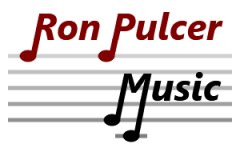This single note melody arrangement of the Star Spangled Banner is in the key of C. This allows you to play the melody entirely in first position on the guitar neck. The melody range is an octave plus a fifth, so from low C note (5th string, 3rd fret) to higher G note (1st string, 3rd fret).
The melody for the first two lyric lines (top line on music sheet) is repeated again for the second two lyric lines (second line of music). While the melody notes in both musical lines are the same, in this arrangement the chord accompaniments are different. The first part uses C and G major chords, while the second part uses A minor and E major chord.
The last section of the piece is where the melody stretches to the 5th note (high G) above the octave note (C at 2nd string, 1st fret). For singers, this is where the song can become challenging. Sometimes it can help to transpose the melody to fit your voice.
There are three places in the melody where an F# note appears to lead into G note and G major chord. The F# brings with it a D7 chord accompaniment. In musical terms, when a note appears from outside the main key (C Major), it is called an “accidental”. So in this context, F# is an accidental note.
The cadence from D7 to G chords in this song, is referred to as a “secondary dominant” chord progression in music theory terms. That is because G or G7 “dominant” chords lead to C chord (the main key chord). Thus as the D or D7 chord is the dominant chord for key of G, and in this case we a temporarily going outside of the main key (modulating), the D7 is a “secondary dominant” to “dominant” G chord. You can find two places in this song where the chords go from D7 to G and then to C.
Happy Independence Day (4th of July)!
Chords used in this song
These chords are listed in the order they first appear in the music.








Melody tablature with chord accompaniment

































